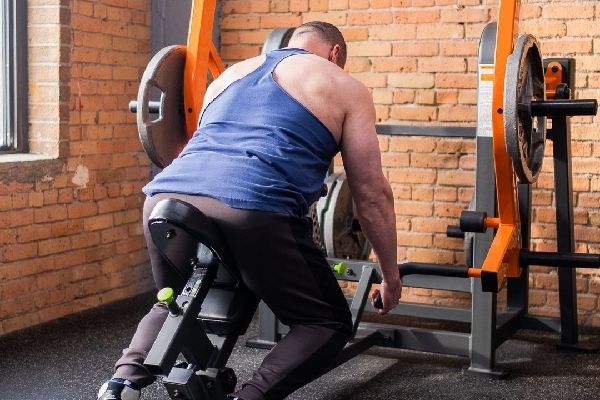Training Assurances: Are You Doing Enough?
What training assurances do you have? How hard are you training? Are you putting in more effort than the person training next to you or are you simply keeping up? What about your competition? How hard do you think they’re going in the gym and how much weight are they moving around? Does any of this even matter? One of the most commonly pondered questions we have within ourselves when it comes to reflecting upon our daily actions in the gym is, “Have I done enough?”
Knowing and being aware of that fine line between stimulating growth and just doing enough to get a good workout in is of paramount importance when trying to reach your goals. You can put together a bunch of workouts whereby you leave sweaty and tired but will your return on effort pay dividends or will it be all for not?
Sometimes you just need a little reassurance in what you’re doing is enough and the following scenarios should provide you with enough accountability within your training approach to know if you’re actually doing enough to support your goals.
Training Assurances, Loads, Volume and Frequency
Bodybuilders and those who train with weights on a regular basis tend to enjoy and thrive off routine. Training assurances is a controllable variable in our day that we can manipulate to improve upon the desired outcome. When routine becomes a problem though is when you get stuck in doing the same old workouts week after week.
So to ensure you are consistently asking your body to do more when it comes to how much weight you lift, your aim should be to increase the weight with a progressive overload approach over the course of a training month. Even the smallest of increments in the loads you use make a huge difference so start using those little 2.5lb plates that you generally walk right past. Secondly, how much work you do in the gym plays a big role in your progress as well. A couple of sets here and there for a few different exercises probably won’t cut it.
Just because you read somewhere that a couple of warm-up sets followed by a couple of working sets should do the trick doesn’t mean it will for you. You may have to do five working sets for an exercise to get the true benefits out of it so when it comes to volume, you should feel like you’ve gotten everything out of the exercise first before moving on.
Finally, how often you train finishes off the “Am I doing enough” question in this regard. The answer to this question is that you may not know yet. If you’re seeing good results, then your training frequency is probably good enough. If you’re not seeing any progress, then you’re not training enough and if you’re training all the time but your gains have slowed down, then you’re probably over-doing it.
The point I’m trying to make here is to pay attention to how your body is responding to the training assurances you are providing it with and then adjust accordingly.
Intensity, Effort, Failure and Beyond
Intensity, as it is applied to your training, will be the deciding factor in how effective your workout actually is. If you’re not laser-focused during each set while simultaneously being completely connected to the working muscle while losing consciousness of everything else that is occurring all around you, then you’re not employing intensity as best you can.
You don’t have to go at each set you complete in this manner but you should definitely adjust your approach to ensure you’re working at this level of mental focus when performing your working sets. Along with intensity comes overall effort and training assurances. What is the deciding factor for you when putting weight on the bar? Are you sticking with what you know or are you pushing yourself into unknown territory?
When you commit to full effort in the gym, that means you’re willing to step out of your comfort zone and into a place where you don’t really know what might happen. All that is certain in these moments is that you’re going to put everything you’ve got into whatever the current pursuit is, finally benching three plates or hitting the 500lb mark on deadlifts or whatever it is and that you’re going to leave it all out there on the gym floor. When you’re done and you can honestly say you’ve got nothing left, that’s a real effort.
Last but not least, knowing what training to true failure and beyond is and then utilizing this consistently is something that many people don’t actually know or understand. You don’t stop the set when it starts to hurt or when you start feeling uncomfortable that’s just when you’re getting started and the real good stuff happens.
Training to failure within a set means that regardless of whatever you could possibly be offered in that exact moment of time to do just one more rep, could never happen no matter how hard you wanted it or tried. Then, once you hit that point, you get your training partner to help you with a few more reps to achieve assisted failure. You do this, week after week with consistency, and any doubt you ever had about whether or not your training assurances are doing enough will be completely erased.
Now, in saying all of this, doing the hard stuff versus saying you’re doing it are two very different things. If you think you’re training hard enough, find someone of your calibre or higher and set up a training session together. You’ll be able to compare your efforts to theirs and get yourself some indication of how well you’re doing or how much more you have to give.
You have to be honest with yourself and true to your approach. Your training assurances are what you do when no one else is around and if you’re still going all out and leaving nothing to chance when everyone else has gone home or it’s a snowy wintery day and the gym is empty, then you can answer the question, “Am I doing enough?”
Happy training my friends!
Author: Dana Bushell
Gym Star Team Member





